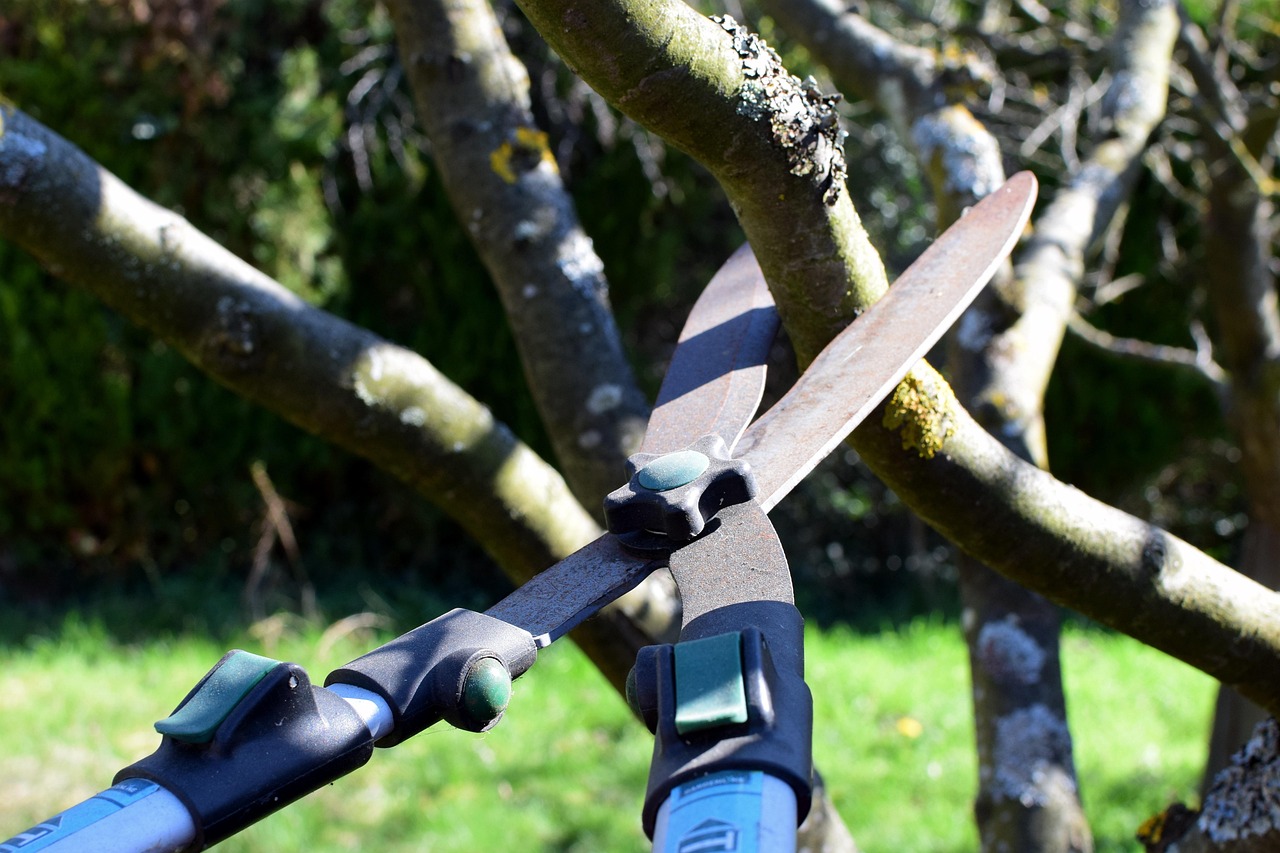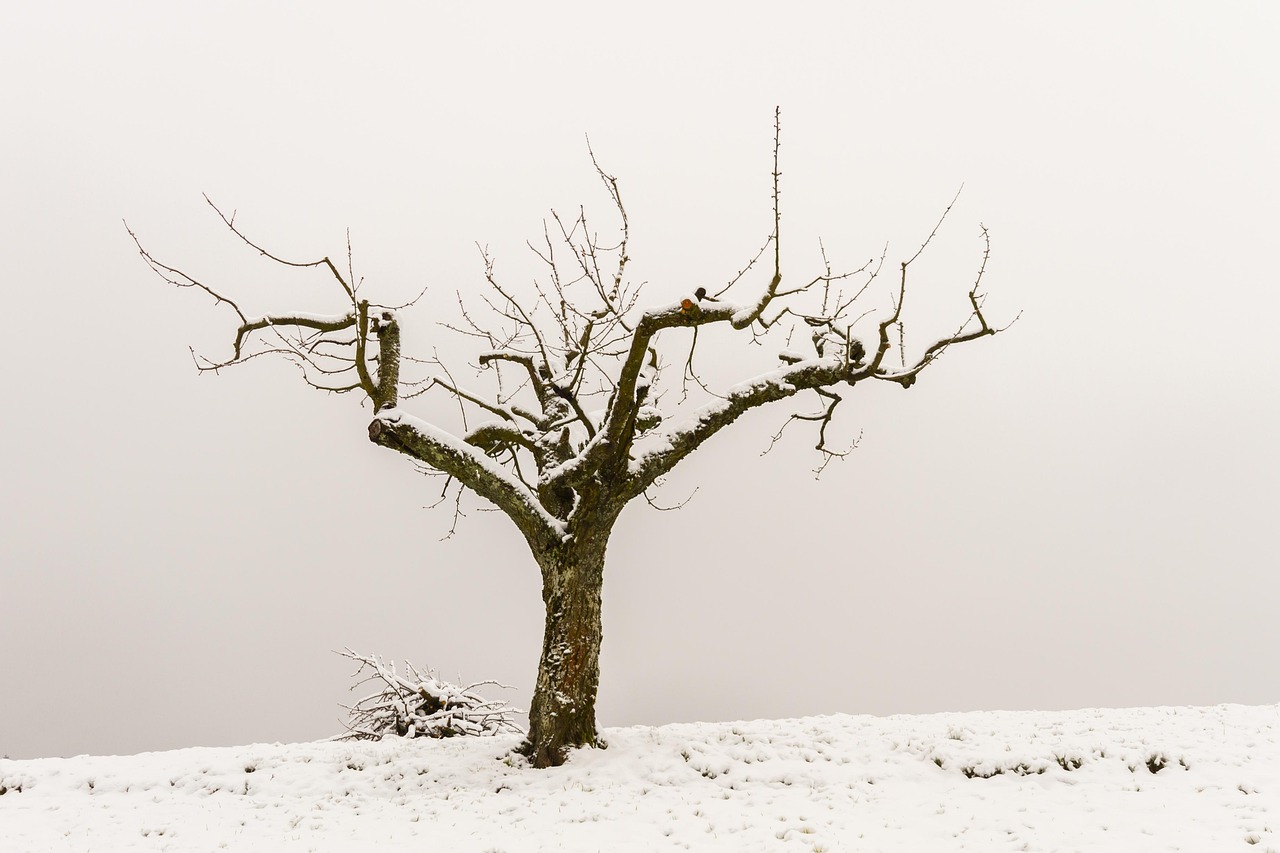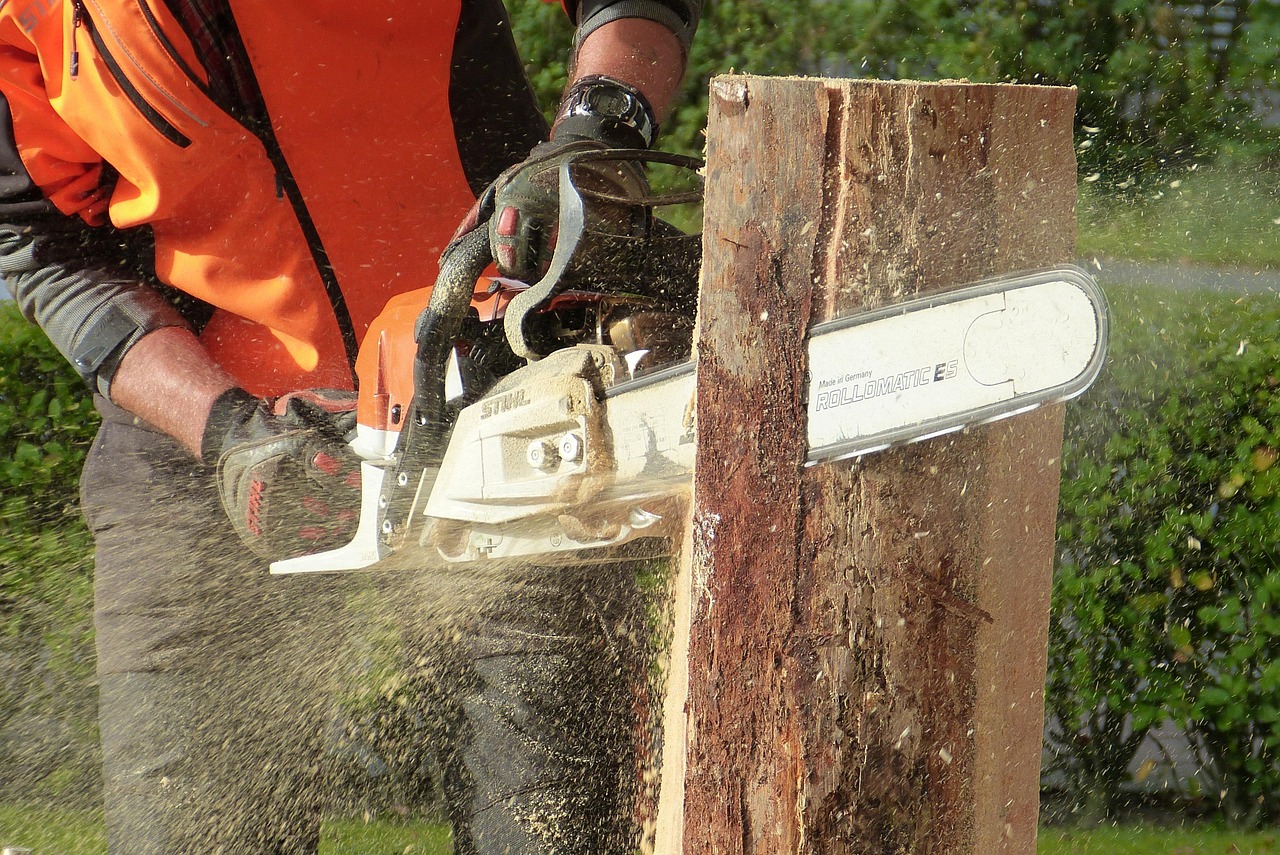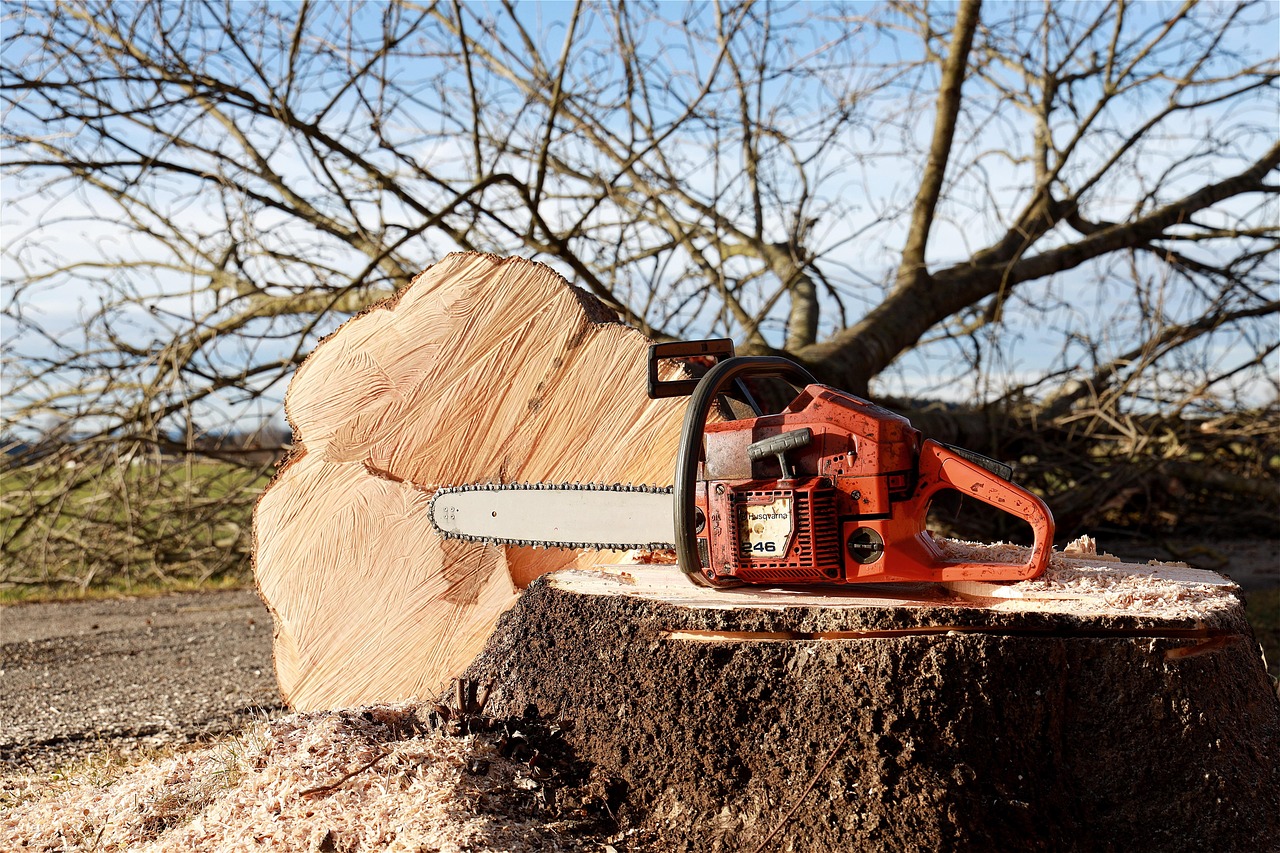Advanced tree pruning techniques enhance tree health, promote proper growth patterns, and improve aesthetics. Arborists should focus on understanding tree biology, selecting the right tools, employing precise cuts, and timing their work to achieve optimal results.
Tree pruning is an essential practice for maintaining the health and structural integrity of trees. Arborists must possess a deep understanding of tree biology and the effects of pruning on different species. Advanced pruning techniques go beyond basic trimming; they involve strategic approaches tailored to specific trees, their environments, and desired outcomes.

Proper pruning can lead to healthier trees, improved air circulation, and increased light exposure. It can also prevent potential hazards by reducing the risk of falling branches. Understanding the purpose of each cut is critical for achieving these goals. Arborists should consider factors such as tree species, age, and overall health when deciding on pruning techniques.
Understanding Tree Biology
Before diving into advanced pruning techniques, it is crucial to understand the biology of trees. Trees are living organisms that respond to pruning in various ways. Here are some key aspects of tree biology relevant to pruning:
- Cambium Layer: This thin layer of tissue is responsible for the growth of new cells. Proper cuts should be made just outside this layer to encourage healing.
- Growth Hormones: Trees produce hormones that regulate growth. Pruning can influence the distribution of these hormones, affecting how a tree grows.
- Callus Formation: After a cut is made, trees form calluses to protect the wound. The goal should be to make clean cuts that facilitate quick healing.
Additionally, different species of trees have unique growth patterns and responses to pruning. Understanding these differences can help arborists select appropriate techniques for each tree type.

Tools for Advanced Pruning
The effectiveness of tree pruning largely depends on the tools used. Arborists need to equip themselves with high-quality tools that match the required tasks. Here is a list of essential tools:
- Hand Pruners: Ideal for making clean cuts on small branches.
- Loppers: Useful for cutting thicker branches that hand pruners cannot handle.
- Saws: Essential for larger limbs; pole saws can help reach high branches without a ladder.
- Chainsaws: Necessary for heavy-duty work but require proper training for safe usage.
- Safety Gear: Helmets, gloves, and eye protection are crucial for preventing injuries.
Pruning Techniques
Applying the correct technique is vital for successful tree pruning. Different methods serve various purposes, from shaping trees to encouraging growth. Below are some advanced techniques commonly used by arborists:
Crown Thinning
Crown thinning involves selectively removing branches to reduce density while maintaining the overall shape of the tree. This method improves light penetration and air circulation. It is essential to remove no more than 20% of the crown in a single session to avoid stress on the tree.

Crown Raising
Crown raising removes lower branches to elevate the crown. This technique is often used for clearance above walkways or structures. Care should be taken to ensure that not too many lower branches are removed at once, as this can lead to instability.
Crown Reduction
Crown reduction reduces the size of a tree’s canopy while maintaining its natural shape. This technique is useful for controlling tree height or spread without compromising its health. It involves cutting back branches to lateral buds rather than making flush cuts.
Directional Pruning
This technique involves pruning branches in specific directions to encourage growth in desired areas. By cutting back towards a bud that faces outward, arborists can shape the tree’s growth effectively.

Timing Your Pruning
The timing of pruning plays a significant role in its success. Different trees have optimal pruning windows based on their growth cycles. Here are general guidelines:
| Tree Type | Best Pruning Time | Reason |
|---|---|---|
| Deciduous Trees | Late Winter/Early Spring | Before new growth begins |
| Evergreen Trees | Late Spring/Early Summer | To avoid winter damage |
| Flowering Trees | Post-Bloom | To promote future blooms |
Understanding these principles can help arborists determine when and how to prune effectively. Each tree has specific needs based on its species, so adapting techniques accordingly is crucial.
Pruning Techniques for Specific Tree Types
Different tree species have unique characteristics and growth patterns. As a result, the pruning techniques applied to them must be tailored to their specific needs. This section will cover advanced pruning strategies for several common tree types, ensuring arborists can achieve optimal results.
Pruning Hardwood Trees
Hardwood trees, which include species such as oak, maple, and birch, require careful attention during the pruning process. Here are some advanced techniques for pruning hardwoods:
- Selective Thinning: Rather than removing entire branches, selectively thin out crowded areas to enhance light penetration and airflow.
- Reducing Competition: Remove weaker branches to allow stronger ones to thrive. This encourages a healthier structure and improves overall tree vitality.
- Layered Pruning: Focus on creating layers within the canopy to maximize sunlight exposure while preserving the tree’s natural shape.
Always remember to make precise cuts just above the branch collar to promote faster healing and minimize the risk of disease.
Pruning Softwood Trees
Softwood trees, such as pine and spruce, have different growth patterns compared to hardwoods. The following techniques are effective for softwoods:
- Pinching Tips: For young softwood trees, pinching tips of new growth can encourage bushier growth and prevent excessive height.
- Removing Dead or Damaged Limbs: Regularly inspect for dead or broken branches, as these can hinder growth and pose safety hazards.
- Crown Cleaning: This involves removing any weak or diseased branches to maintain a healthy canopy.
Softwoods typically respond well to pruning in late spring or early summer, allowing for robust regrowth.
Advanced Pruning Techniques for Aesthetic Purposes
Aesthetic pruning goes beyond health considerations; it focuses on shaping trees for visual appeal. Arborists often use specific techniques to create a desired look. Below are some advanced methods:
Topiary Pruning
Topiary involves shaping trees into ornamental forms. This technique requires skill and patience as it often takes several years to achieve the desired shape. Here are key steps:
- Choose the Right Species: Not all trees respond well to topiary. Select species known for their dense foliage and ability to withstand heavy pruning.
- Establish a Framework: Use wire frames or stakes to guide the shape of the tree as it grows.
- Regular Maintenance: Topiary requires frequent trimming to maintain its shape and prevent overgrowth.
Espalier Pruning
Espalier is a technique used to train trees to grow flat against a wall or trellis. This method is often used for fruit trees and creates stunning visual displays. Key techniques include:
- Selecting Suitable Trees: Choose species that are naturally suited for espalier techniques, like apple or pear trees.
- Establishing Anchor Points: Use wire or trellis systems to guide the branches into the desired flat shape.
- Continuous Training: Consistently prune and train new growth to follow the established pattern.
Pest and Disease Management During Pruning
Pest and disease management is an essential consideration during the pruning process. Pruning can expose trees to potential threats if not handled properly. Here are advanced tips for managing pests and diseases:
Sanitation Practices
Maintaining cleanliness in tools and workspace can significantly reduce the risk of disease transmission. Follow these sanitation practices:
- Clean Tools: Disinfect tools before and after use with a solution of 10% bleach or rubbing alcohol.
- Avoid Working in Wet Conditions: Prune only when trees are dry to minimize the spread of fungal diseases.
Identifying Signs of Pests and Diseases
Regular inspection of trees is vital for early detection of issues. Look for signs such as:
- Discoloration of Leaves: Yellowing or browning leaves may indicate nutrient deficiencies or diseases.
- Cankers or Wounds: Examine for any abnormal growths or wounds that could harbor pests.
If pests or diseases are detected, consult with an arborist or a pest management professional to determine appropriate treatment options.
Utilizing Technology in Tree Pruning
The advancement of technology has transformed how arborists approach tree care, including pruning. Various tools and software can enhance efficiency and effectiveness in the field. Consider these technological aids:
- Drones: Use drones for aerial assessments of large trees or forests, providing a comprehensive view that is difficult to achieve from ground level.
- Pruning Apps: Mobile applications can assist arborists in planning pruning schedules, tracking tree health, and documenting work.
- Sensors: Soil moisture sensors can help determine when trees need care, ensuring timely interventions.
By integrating technology into their practices, arborists can improve their understanding of tree health and enhance their pruning strategies.
Safety Precautions for Arborists During Pruning
Safety is paramount when it comes to tree pruning. Arborists work with sharp tools and at heights that pose risks. Implementing proper safety precautions can prevent accidents and injuries. Here are essential safety measures to consider:
Personal Protective Equipment (PPE)
Wearing the right personal protective equipment is crucial for arborists. The following items should be part of every arborist’s gear:
- Hard Hats: Protect against falling branches and debris.
- Safety Glasses: Shield eyes from wood chips and dust during cutting.
- Gloves: Ensure a firm grip on tools and protect hands from cuts.
- Hearing Protection: Use earplugs or earmuffs when operating loud machinery like chainsaws.
- Steel-Toed Boots: Protect feet from heavy falling objects and provide stability on uneven terrain.
Tool Safety
Tools are an integral part of the pruning process, but they can also be hazardous. Follow these guidelines to ensure tool safety:
- Regular Maintenance: Keep tools in good condition. Sharpen blades and lubricate moving parts to ensure efficiency and safety.
- Proper Handling: Always cut away from your body. Use both hands when operating larger tools like saws.
- Secure Storage: Store tools safely and out of reach when not in use to prevent accidents.
Working at Heights
Pruning often requires working at significant heights. Arborists must take specific precautions when climbing or using lifts:
- Ladder Safety: Use sturdy, stable ladders rated for the intended load. Ensure that ladders are positioned on flat ground and have a secure base.
- Climbing Gear: When climbing trees, use harnesses, ropes, and other climbing gear designed for tree work to prevent falls.
- Aerial Lift Safety: When using aerial lifts, ensure they are inspected before use. Follow all operational guidelines to prevent accidents.
Environmental Considerations in Tree Pruning
Tree pruning can impact the surrounding environment. Arborists must be mindful of ecological factors during their work. Here are important considerations:
Wildlife Protection
Trees can serve as habitats for various wildlife species. Understanding and mitigating the impact of pruning on local fauna is essential. Arborists should:
- Avoid Nesting Seasons: Prune trees outside of nesting seasons to protect birds and other wildlife.
- Identify Habitats: Be aware of any nests or wildlife habitats present in the tree before pruning.
- Use Careful Techniques: When pruning trees with wildlife habitats, opt for techniques that minimize disturbance.
Soil Health
The health of the soil around trees plays a vital role in their overall well-being. Arborists should consider the following:
- Avoid Soil Compaction: Minimize foot traffic and equipment use around the root zone to prevent soil compaction, which can damage root systems.
- Mulching: Apply mulch around the base of trees to retain moisture, suppress weeds, and improve soil quality.
- Sustainable Practices: Implement sustainable practices that benefit both tree health and soil ecology.
The Role of Pruning in Tree Health Management
Pruning is not merely for aesthetics; it plays a crucial role in the overall health management of trees. Understanding this relationship can help arborists make informed decisions during the pruning process. Here are some key aspects of tree health management related to pruning:
Promoting New Growth
Pruning encourages new growth by removing older, less productive branches. This process helps trees focus their energy on healthier, more vigorous growth. Consider these points:
- Cuts at Nodes: Make cuts just above a node or bud to stimulate new growth in the desired direction.
- Reducing Overcrowding: Thinning out crowded branches allows remaining branches to receive more light and nutrients.
Disease Prevention
Regular pruning helps prevent the spread of diseases by removing infected branches. Here are some strategies for disease management through pruning:
- Remove Infected Material: Identify and remove any diseased limbs to prevent further infection throughout the tree.
- Avoid Wounding Healthy Tissue: Make clean cuts to minimize injury and stress on healthy branches.
Improving Structural Integrity
A well-pruned tree has a stronger structure, reducing the risk of failure during storms or adverse weather conditions. Key practices include:
- Assessing Tree Structure: Evaluate the tree’s branching pattern and identify weak points that may need reinforcement through pruning.
- Crown Clearance: Maintain adequate clearance between the crown and structures or hazards by selectively removing lower branches.
Continuous Learning and Training for Arborists
The field of arboriculture is constantly evolving, with new techniques and research emerging regularly. Continuous learning is vital for arborists to stay updated with best practices in pruning and tree care. Here are ways to enhance knowledge and skills:
- Professional Certifications: Pursue certifications from organizations like the International Society of Arboriculture (ISA) to improve credentials and knowledge.
- Workshops and Seminars: Attend workshops and seminars focused on advanced pruning techniques and tree health management.
- Networking with Peers: Join local or national arborist associations to connect with other professionals in the field.
By committing to ongoing education, arborists can ensure they provide the best care for trees and remain competitive in their field.
Integrating Pruning Techniques with Landscape Management
As arborists develop advanced pruning skills, it is essential to integrate these techniques with overall landscape management practices. Trees are a vital component of landscapes, contributing to aesthetics, biodiversity, and environmental health. Here are ways to harmonize tree pruning with landscape care:
Understanding the Landscape Ecosystem
Every landscape is an ecosystem with interdependent elements. Arborists should assess how trees fit into this ecosystem. Key considerations include:
- Soil Quality: Healthy soil supports tree growth. Arborists should evaluate soil composition and nutrient levels to enhance tree health.
- Plant Compatibility: Consider the relationship between trees and other plants. Different species may compete for resources, affecting overall health.
- Microclimates: Identify microclimates within the landscape that influence tree health, such as areas with different sunlight or moisture levels.
Creating a Pruning Schedule
Establishing a regular pruning schedule is crucial for maintaining healthy trees and landscapes. A structured approach allows arborists to:
- Monitor Tree Health: Regular inspections can identify issues early, allowing for timely interventions.
- Plan for Seasonal Changes: Align pruning activities with seasonal growth patterns to maximize benefits.
- Enhance Aesthetic Appeal: Consistent pruning keeps trees looking their best throughout the year.
The Economic Benefits of Advanced Tree Pruning
Investing in advanced tree pruning techniques offers various economic benefits for arborists and property owners alike. Well-maintained trees can lead to cost savings and increased property value. Consider the following:
Reducing Maintenance Costs
Properly pruned trees are generally healthier and more resilient, which can reduce long-term maintenance costs. Key points include:
- Fewer Pest Issues: Healthy trees are less susceptible to pest infestations, minimizing the need for costly treatments.
- Reduced Risk of Damage: Trees with strong structural integrity are less likely to suffer storm damage, avoiding repair expenses.
Increasing Property Value
A well-maintained landscape enhances property value significantly. Research indicates that mature trees can increase property values by as much as 15%. Benefits include:
- Aesthetic Appeal: Attractive trees contribute to a pleasing landscape design.
- Environmental Benefits: Trees improve air quality and provide shade, making properties more appealing to potential buyers.
Future Trends in Arboriculture and Tree Pruning
The field of arboriculture is continually evolving, with new trends emerging that impact tree pruning practices. Arborists should stay informed about these trends to remain competitive. Some notable trends include:
Sustainable Practices
Sustainability is becoming increasingly important in arboriculture. Arborists are focusing on practices that minimize environmental impact. Examples include:
- Organic Treatments: Utilizing organic methods for pest and disease management.
- Water Conservation: Implementing techniques that promote water-efficient landscapes.
Use of Advanced Technology
The integration of advanced technology in arboriculture is changing how pruning is performed. Innovations include:
- Data Analytics: Utilizing data-driven approaches to assess tree health and predict growth patterns.
- Remote Monitoring: Implementing sensors to monitor tree conditions and environmental factors in real-time.
Conclusion
Advanced tree pruning techniques play a crucial role in maintaining the health, structure, and aesthetics of trees. By understanding tree biology, utilizing the right tools, and applying appropriate techniques, arborists can enhance tree vitality and longevity. Safety precautions must be prioritized to ensure the well-being of both arborists and the environment they work in.
Continuous learning, integration with landscape management, and awareness of economic benefits are vital for successful arboriculture practices. As trends shift towards sustainability and technology, staying informed will enable arborists to adapt and thrive in their field. Ultimately, well-pruned trees contribute positively not only to individual properties but also to the broader ecosystem, enhancing our urban and rural landscapes for generations to come.
